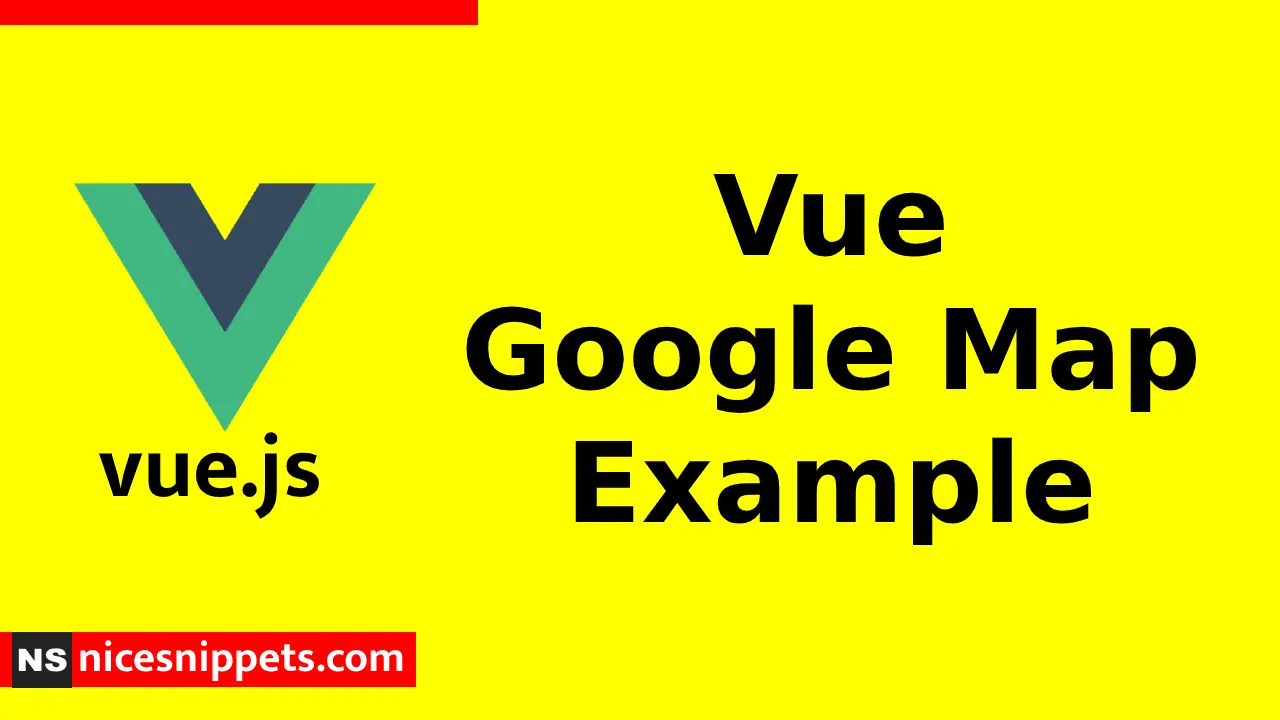19-Dec-2020
.
Admin

Hi Guys,
Today,I will learn you how to create google map in vue. we will show example of google map in vue. I will make google maps in vue with vue2-google-maps. Google Maps presents a robust set of APIs for building and interacting with maps, visualizing location data, and searching via autocomplete, to name but a few. While the sheer breadth of their offering seems a bit overwhelming, it’s actually quite simple to get started.
Here follow this example of google maps in vue with vue2-google-maps.
Creating a Project
here, I this step create new Vue Project.follwing command
vue create google-map-vue
Installation Package
Now this step,If starting from scratch, use the vue-cli template of your choice (we like webpack-simple). Then install vue2-google-maps, note this is the updated version for Vue 2
npm install vue2-google-maps --save
Get API Key
In this step,There’s a handy button right in the Maps Javascript API docs. Simply click on ‘GET A KEY’ and follow the instructions. Also, if you plan on releasing anything into the wild, it’s best to add your billing information as this will drastically raise your 'free’ daily API limits.
Add to Vue with vue2-google-maps
In this step,Import vue2-google-maps in main.js and instantiate the plugin using your API key from above. Note that we are also telling it to load the places library, which is required for the autocomplete.
vue2-google-maps/src/main.js
import Vue from "vue";
import App from "./App";
import * as VueGoogleMaps from "vue2-google-maps";
Vue.use(VueGoogleMaps, {
load: {
key: "REPLACE-THIS-WITH-YOUR-KEY-FROM-ABOVE",
libraries: "places" // necessary for places input
}
});
new Vue({
el: "#app",
components: { App },
template: "
" });
Map Search Component
Here this step, Create a new component called GoogleMap.vue and paste the following into it:
vue2-google-maps/src/components/GoogleMap.vue
<template>
<div>
<div>
<h2>Search and add a pin</h2>
<label>
<gmap-autocomplete
@place_changed="setPlace">
</gmap-autocomplete>
<button @click="addMarker">Add</button>
</label>
<br/>
</div>
<br>
<gmap-map
:center="center"
:zoom="12"
style="width:100%; height: 400px;"
>
<gmap-marker
:key="index"
v-for="(m, index) in markers"
:position="m.position"
@click="center=m.position"
></gmap-marker>
</gmap-map>
</div>
</template>
<script>
export default {
name: "GoogleMap",
data() {
return {
// default to Montreal to keep it simple
// change this to whatever makes sense
center: { lat: 45.508, lng: -73.587 },
markers: [],
places: [],
currentPlace: null
};
},
mounted() {
this.geolocate();
},
methods: {
// receives a place object via the autocomplete component
setPlace(place) {
this.currentPlace = place;
},
addMarker() {
if (this.currentPlace) {
const marker = {
lat: this.currentPlace.geometry.location.lat(),
lng: this.currentPlace.geometry.location.lng()
};
this.markers.push({ position: marker });
this.places.push(this.currentPlace);
this.center = marker;
this.currentPlace = null;
}
},
geolocate: function() {
navigator.geolocation.getCurrentPosition(position => {
this.center = {
lat: position.coords.latitude,
lng: position.coords.longitude
};
});
}
}
};
</script>
I will creating a gmap-autocomplete and a gmap-map (with
children gmap-markers). Initially, the map is created centered on Montreal. After the instance is mounted(), we call geolocate and re-center.
Once a user enters a search term and makes a selection from the autocomplete dropdown, the gmap-autocomplete calls setPlace. This selection is then stored in currentPlace. When the add button is clicked, we call addPlace which stores the marker location in markers, triggering the gmap-map (and subsequently gmap-markers) to update. We’re also updating center to the position of the last marker. Additionally, we’re storing each place’s full place object in the places property. This will allow any additional data returned from the automplete query to be used in this component or any child components, as needed.
Add to App.vue
In this last, just add your new component in App.vue and everything should look something like this:
vue2-google-maps/src/App.vue
<template>
<div id="app">
<google-map />
</div>
</template>
<script>
import GoogleMap from "./components/GoogleMap";
export default {
name: "App",
components: {
GoogleMap
}
};
</script>
It will help you....
#Vue